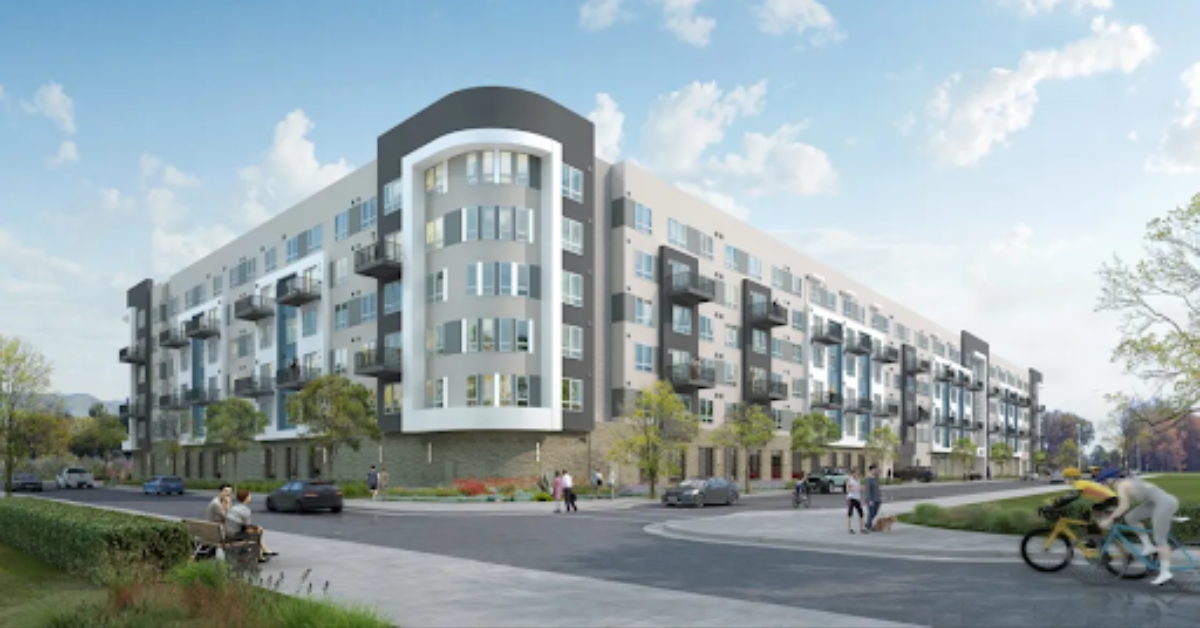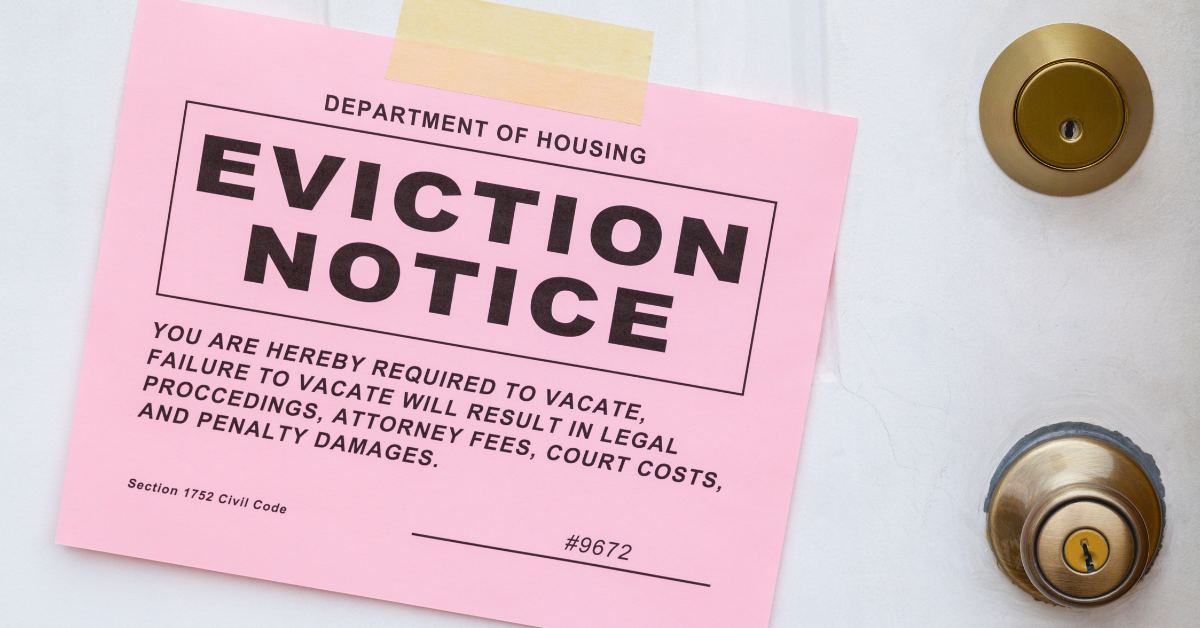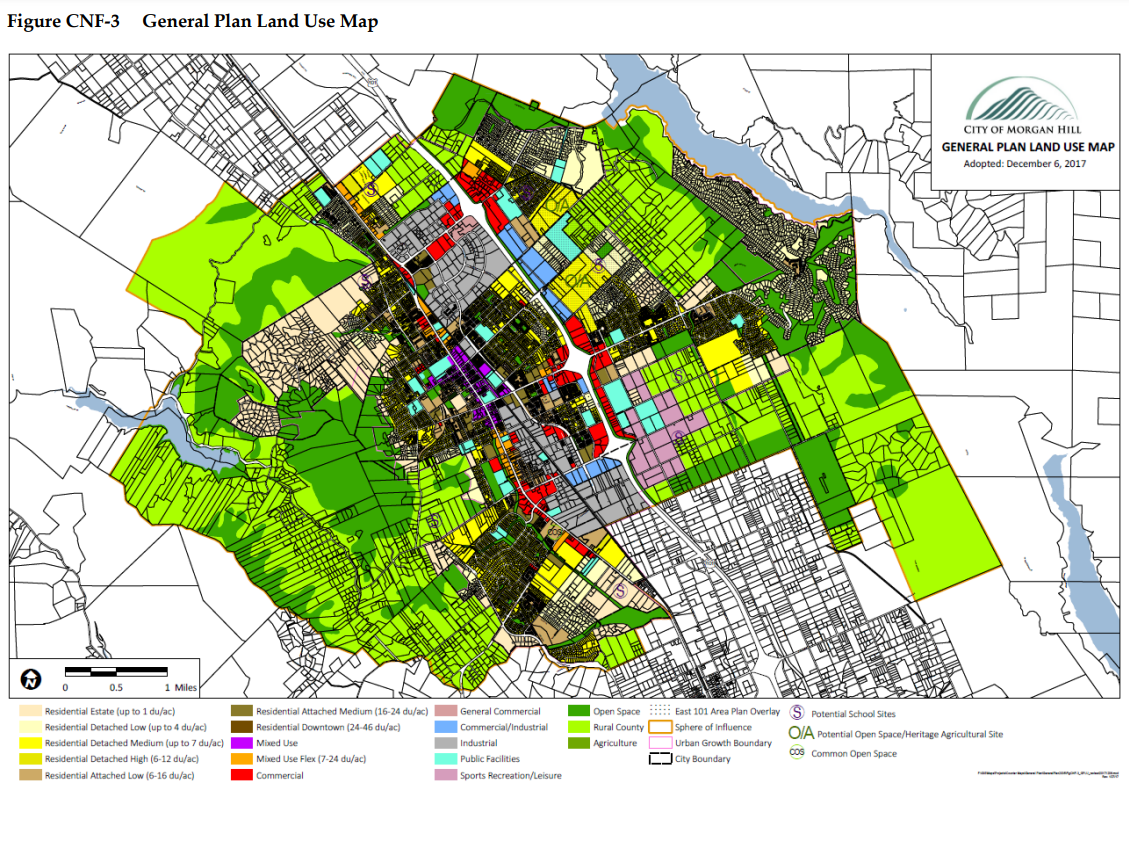Every city and county in California is required by the State to adopt a General Plan that sets forth a comprehensive, long-range plan “for the physical development of the county or city, and any land outside its boundaries which in the planning agency’s judgment bears relation to its planning” (Gov. Code § 65300). The General Plan functions as the policy framework governing local jurisdiction approvals of zoning, subdivision, and other land use entitlements, as well as planning to meet the need for additional public infrastructure and facilities. A General Plan targets a year in the future by which time the plan will be implemented, called the “planning horizon.”
State law requires that the General Plan address eight topics, or elements: Land Use; Circulation (transportation), Housing, Open Space, Conservation, Safety, Noise, and as of 2018, Environmental Justice (this element will be phased in as cities revisit their other elements). Cities may also include additional elements on issues of concern, such as Economic Development or Social and Racial Justice. There is no limit on the number of elements that a general plan can include. Once added into the general plan, each element, regardless of statutory requirement, assumes the same legal standing, and must be consistent with other elements. Of the eight elements, the two that most directly affect the supply of affordable housing are the Land Use and Housing Elements.
Land Use Element
The Land Use Element consists of a map of the jurisdiction with different colors designating properties planned for housing at various densities, as well as a variety of commercial, industrial, and other non-residential uses. Generally, higher densities of housing and greater intensities of employment land uses are clustered near the downtown or town center area, around rail transit stations, and along bus lines. Lower densities of housing are generally located towards the edge of the urban area and in hilly locations. Residential designations need to be able to accommodate a variety of housing densities, particularly those that are needed by developers of affordable housing.
The sum total of housing at various densities and types and intensities of properties planned for non-residential uses in the Land Use Element show how the jurisdiction intends to address its balance, or imbalance, between jobs and housing. Decisions about residential densities and intensity of non-residential land uses affect not only the immediate neighborhoods but also impact the entire community, nearby cities, and the region as a whole.
General Plans for Santa Clara County Cities
- Sunnyvale
- Saratoga
- Santa Clara County
- Santa Clara
- San Jose
- Palo Alto
- Mountain View
- Morgan Hill
- Monte Sereno
- Milpitas
- Los Gatos
- Los Altos Hills
- Los Altos
- Gilroy
- Cupertino
- Campbell– General Plan Update underway
Housing Element
The Housing Element is an 8-year plan to meet the housing needs of all a jurisdiction’s existing residents and projected new residents, at all income levels. Developed through extensive engagement with community members and stakeholders, the Housing Element must contain several key sections. The Housing Needs Assessment must analyze the housing needs of residents, including racial disparity in access to opportunity, displacement risk, and the unique housing needs of people protected under California’s Fair Housing Act. The Assessment of Fair Housing must identify local and regional patterns of racial integration and segregation, and racial concentrations of affluence and poverty, and analyze contributing factors. The Constraints Analysis must identify barriers to housing production, including fees, approval timelines, and neighborhood opposition.
Equipped with this foundational understanding of housing issues, each jurisdiction then must create solutions to meet the identified housing needs. Sites must be chosen throughout the jurisdiction to accommodate the Regional Housing Needs Allocation (RHNA), the number of housing units at every income level each jurisdiction is projected to need for all its current residents and the next 8 years of growth. Jurisdictions must also create policies and programs that reduce constraints and create incentives for housing development, preserve existing affordable housing, protect vulnerable tenants, prevent homelessness, and expand racial integration and access to opportunity.
Check out the Housing Element page for additional detail.
Amendments to General Plans
Jurisdictions regularly amend General Plans to reflect changed conditions and situations. Amendments may be needed when new State laws require an adjustment of land use or inclusion of policies. The update of the Housing Element, required every eight years to incorporate the latest RHNA production goals, is also considered an amendment to the General Plan. Many cities also have processes under which property owners can apply for changes to their land use designation. When a jurisdiction is approaching the planning horizon in its current plan, the jurisdiction must undertake a comprehensive overhaul of the Plan to extend the planning horizon further into the future.
Specific Plans
A jurisdiction may determine that certain areas planned for strategic growth need a more fine-grained approach to planning. In such cases, it can create a Specific Plan that implements General Plan policies but with a customized set of development standards. Adoption of a Specific Plan is another way to amend the General Plan.
Comprehensive or piecemeal amendments to a General Plan or adoption/revision of a Specific Plan provide opportunities for public involvement in advocating for more affordable housing and housing with deeper affordability levels.
Additional resources:
State of California: Basic General Plan Information
State of California: General Plan Guidelines
Public Health Law and Policy: General Plans and Zoning



